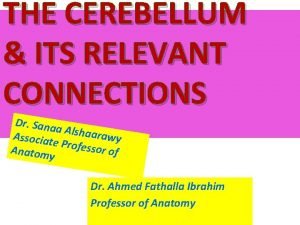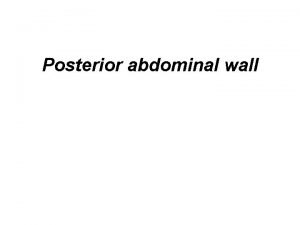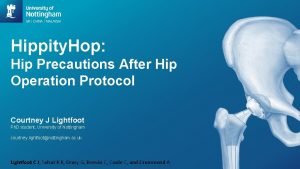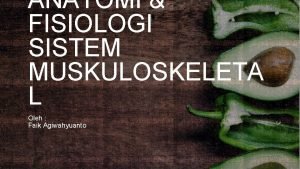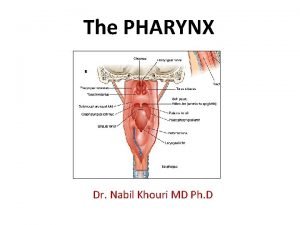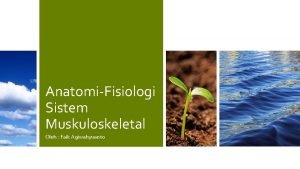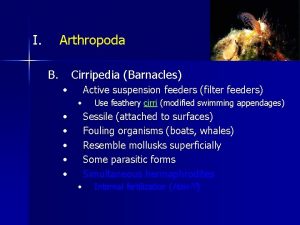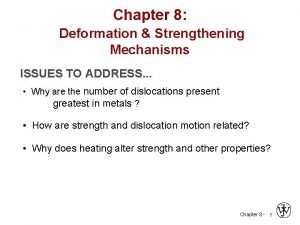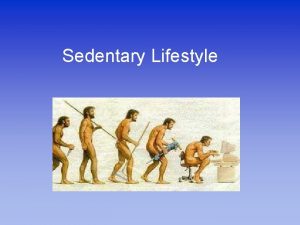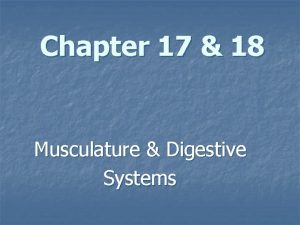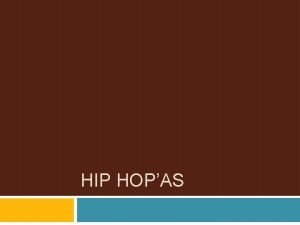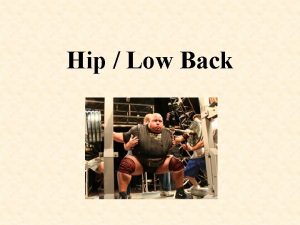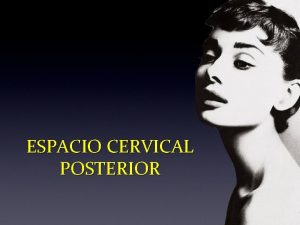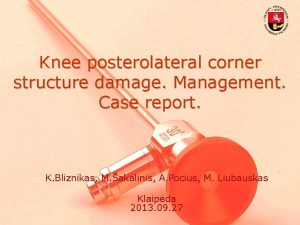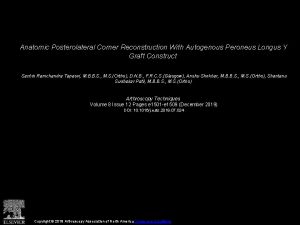Hip Posterolateral Musculature Strengthening in Sedentary Women With














- Slides: 14

Hip Posterolateral Musculature Strengthening in Sedentary Women With Patellofemoral Pain Syndrome Andre Ishmael

What Is Patellofemoral Pain Syndrome? � Patellofemoral Pain Syndrome also commonly known as PFPS is a general term for anterior knee pain or discomfort. � Usually arises from increased contact of the posterior surface of the patella with the femur or inflammation of structures around the patella.

What causes PFPS? The cause of PFPS is usually from malalignment or biomechanical dysfunction with the patellofemoral joint. � According to Mascal and Powers, this includes impairments that cause an increased functional Q-Angle such as: Femoral anteversion, external tibial torsion, genu valgum, foot hyperpronation, or increased hip flexion and adduction. � There may also be a tight retinaculum, weak VMO, patella alta, patella baja, or dysplastic femoral trochlea. � � All these can predispose the person to abnormal patellar tracking, which increase contact forces between patella and femur, increase pull on patellar tendon, or inflamed fat pads or bursa, thus causing the pain.


Signs & Symptoms � Pain or poor control when ascending or descending stairs. � Pain with walking, running, and jumping. � Pain and stiffness associated with prolonged sitting and squatting. � Grating and grinding under patella with movement.

Current Treatment Protocol � There is none because every patient has different causes of PFPS. � Most included strengthening muscle and stretching muscles and soft tissue around the knee.


Selectively Strengthening the VMO � � � SAQ (OKC terminal ext)? No ▪ Lieb and Perry JBJS 1968, JBJS 1971 ▪ Basmajian Anat Rec 1971 ▪ Hallen et al Acta Orthop Scand 1967 ▪ Jackson Med Sci Sport Exe 1972 ▪ Reynolds et al Am J Phys Med 1983 ▪ Salzman et al. Clin Orthop 1993 Quad exercises No ▪ Cerny Phys Therapy 1995 ▪ La. Prade JOSPT 1998 ▪ Vaatainen et al Int J Sports Med 1995 ▪ Mirzabeigi et al AJSM 1999 Biofeedback Yes ▪ Cowan et al Med Sci Sport Ex 2002 No ▪ Dursun et al Arch Phys Med Rehab 2001 � Hip Adduction Yes ▪ Hanten and Schulthies ▪ Hodges and Richardson 1993 No ▪ Karst and Jewett ▪ Grabiner ▪ ▪ Cerny Laprade Phys Ther 1990 Scand J Rehab Med Phys Ther 1993 Eur J Exp Musculoskel Res 1993 Phys Ther 1995 JOSPT 1998

� Robinson JOSPT 2007

Current Research �Fukuda JOSPT 2012

KHE Group � Fukuda JOSPT 2012

Results � Fukuda JOSPT 2012

Closing Remarks � � More research with different demographics Implementing into current practice Other causes Questions?

Thank You
 Emboliform
Emboliform Lower thired
Lower thired Teochanter
Teochanter Hip hippity hop
Hip hippity hop Poem about hip hop
Poem about hip hop Muskuloskeleta
Muskuloskeleta Pharyngeal wall layers
Pharyngeal wall layers Jenis otot axial musculature terdapat pada
Jenis otot axial musculature terdapat pada Pantaloon hernia
Pantaloon hernia Nomadic warrior theory vs sedentary farmer
Nomadic warrior theory vs sedentary farmer Sedentary suspension feeders
Sedentary suspension feeders Hong kong dietary guidelines
Hong kong dietary guidelines What are stock solutions
What are stock solutions Address
Address 6 pillars of health system strengthening
6 pillars of health system strengthening
